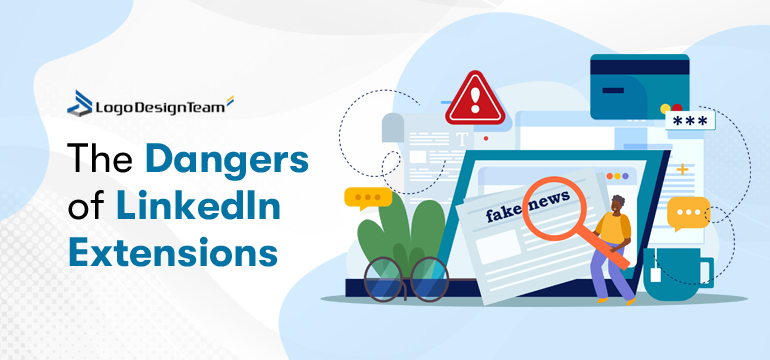Today, LinkedIn is widely used for professional networking, but it is not effective for all professionals. However, we have also noticed an upsurge in Chrome extension usage, along with an upsurge in LinkedIn usage.
Wondering why LinkedIn users use Chrome extensions? It is because it allows them to automate tasks and improve their platform experience.
Despite all the benefits, not all extensions are safe, some LinkedIn extension lists are dangerous and full of malicious threats, and could seriously jeopardize your LinkedIn account.
Why are professionals using chrome extensions for LinkedIn?
Chrome extensions are mostly used on LinkedIn so that professionals can streamline their workflow and automate repetitive tasks. From the extraction of leads to profile scraping, these tools offer a variety of functionalities that save time and enhance productivity of an user.
Let’s understand it better with an example:
Lets say a LinkedIn lead extractor Chrome extension is helping you with quickly extracting valuable leads and then automatically transferring them to your CRM, giving you the comprehensive data for research and decision making through LinkedIn profile scraper.
So, why are extensions considered risky and dangerous if they streamline the work?
The Dark Side of Extensions: Risks and Detection
Even though extensions are beneficial, but Linkedin extension lists can be dangerous, it can be risky and this is why it is important to be cautious and aware.
Here are the reasons extensions are considered bad:
1. Violation of LinkedIn’s Terms of service:
Despite the fact that extensions automate tasks on LinkedIn, such as scraping data and more, but LinkedIn’s terms of service prohibit the use of automation tools, and therefore using any LinkedIn extensions list can be dangerous and might result in account suspensions.
2. Data Privacy Concerns:
Some extensions can collect and store user data, including your personal information, without your proper consent. This definitely raises privacy concerns and is alarming, especially for LinkedIn, as it is a professional networking platform.
3. Security Vulnerabilities:
LinkedIn extensions can be malicious and may contain code that can steal sensitive information or trade off your system’s security.
4. Monitoring and Detection:
LinkedIn actively monitors the presence of extensions and automated activities. Thus, it raises flags even when the extension isn’t directly violating LinkedIn’s terms and conditions.
5. Loss of Control:
When you use extensions for automating your tasks on LinkedIn, you’re indirectly giving away some control over LinkedIn to extensions. This can have consequences, such as sending out mass connection requests or messages that may not align with your networking goals.
Now let’s understand LinkedIn’s detection methods.
Insider Hacks: Understanding LinkedIn’s Detection Methods
LinkedIn’s detection mechanism is like a smart cop that meticulously scrubs its interface for clues about extension usage and can detect dangerous LinkedIn extensions list. The platform examines browser data and local files, sending requests locally to distinct extension resources. LinkedIn’s server then receives this information for further analysis.
So here is the thing: While Chrome extensions significantly improve your LinkedIn experience, they also come with danger, which is why you must consider choosing powerful tools and be aware of LinkedIn’s ever-evolving monitoring practices.
How can you choose a safer alternative?
There are many softwares and tools out there that are efficient and never compromise on account security and can keep you safe and make you aware of dangerous LinkedIn Extension lists.
One of the safest and smartest tools that you can choose is LinkedIn Helper.
Linked Helper stands out as a safe option for:
- LinkedIn automation,
- Prioritizing user safety, and
- mimicking human interaction patterns.
By balancing proficiency with good risk awareness, you can optimize your LinkedIn experience with Chrome extensions while protecting your account. It also incorporates strategic time-outs and regularly changes the digital fingerprint to avoid detection.
Visit our website now to learn more about the LinkedIn automation tool for smart outreach.




